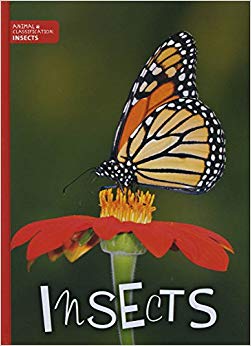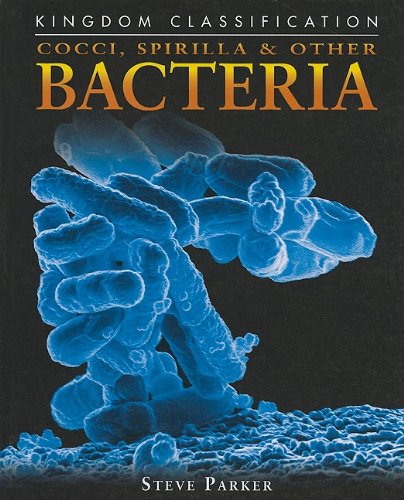-
Fish
Steffi Cavell-Clarke
Paperback (Kidhaven Publishing, Jan. 1, 2017)Readers travel to the depths of the ocean as they learn fascinating facts about what makes fish different from other animals. As readers develop their ability to classify animals based on shared characteristics, they also learn about fish life cycles, habitats, and other common science curriculum topics. Fact boxes filled with exciting information and detailed diagrams and other graphic organizers present readers with additional information about these cool creatures. Vivid photographs give readers an up-close view of some of the worlds most interesting fish species, creating a reading experience they wont soon forget! W
W
-
Insects
Charlie Ogden
Hardcover (Book Life, )None
-
Invertebrates
Angela Royston
Library Binding (Heinemann, Jan. 1, 2015)This fascinating series takes a very simple look at animal classifications, with each book focussing on a different group of animal. This book is about invertebrates: what they do, how they behave, and how these characteristics are different from other groups of animals. Beautifully illustrated with colorful photographs, the book shows many examples of different types of invertebrates in their natural environment. N
N
-
Sunflowers, Magnolia Trees & Other Flowering Plants
Steve Parker
Library Binding (Compass Point Books, July 1, 2009)Parker, Steve Y
Y
-
Protozoa
Joanna Brundle
Paperback (KidHaven Publishing, July 15, 2019)Many mammals, insects, and other animals are easily recognizable. However, there are other creatures that are less well known, such as protozoa, which are single-celled living things that are neither plants nor animals. These tiny organisms can only be seen by looking through a microscope. They live in various habitats and even inside animals. This age-appropriate and well-researched text simplifies this complex biology topic to make it more easily understandable for young readers. Detailed graphic organizers, informational diagrams, engaging fact boxes, and vibrant, full-color photographs enhance this essential science curriculum topic. N
N
-
The Plant Kingdom
Theresa Greenaway
Hardcover (Hodder Wayland, July 31, 1999)This text describes in detail variation and classification within the plant world. The information given includes topics such as plant growth, photosynthesis, life cycles as well as adaption to habitat and uses by humans.
-
Insects
Charlie Ogden
Paperback (Kidhaven Publishing, Jan. 1, 2017)Insects can be very different, but they all have some important characteristics in common. Readers discover that these shared characteristics are what help scientists classify certain creatures as insects. As readers explore the basics of animal classification, they also discover freaky and fun facts about a variety of insects. U
U
-
Birds
Charlie Ogden
Paperback (Kidhaven Publishing, Jan. 1, 2017)"Some of the most unique animals on the planet are classified as birds. As readers explore this amazing animal group, they discover fun facts about a wide variety of birds. They also learn the essential scientific skill of classifying animals by common characteristics"-- Q
Q
-
Reptiles
Steffi Cavell-Clarke
Paperback (Kidhaven Publishing, Jan. 1, 2017)"Alligators, crocodiles, and lizards are all amazing animals, and they are also all reptiles. Why are these cool creatures classified as reptiles and not amphibians, fish, or birds? Readers find the answer as they learn fascinating facts about what makes reptiles unique"-- Q
Q
-
Cocci, Spirilla & Other Bacteria
Steve Parker
Library Binding (Compass Point Books, July 1, 2009)This book introduces you to the microscopic world of bacteria, from blue green algae to spirochetes. It examines how bacteria move, feed, and reproduce. It also looks at the benefits and drawbacks of how people use bacteria, as well as our body’s defense against harmful bacteria. Did You Know? Bacteria may have been the first living organisms on the planet. The light that some animals give off comes from their bacteria. Some types of bacteria can divide creating two new bacteria every 15 to 20 minutes. Y
Y

